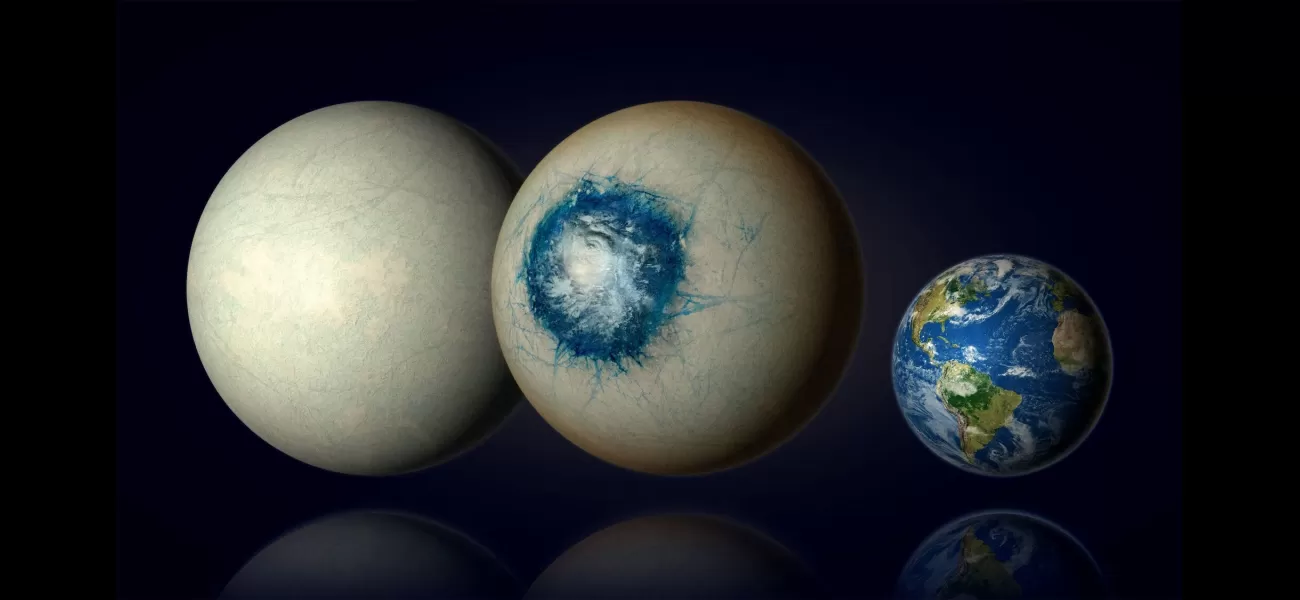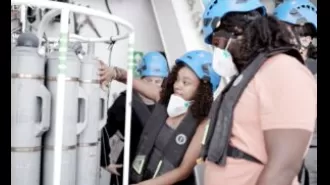Possible paraphrase: Eye-shaped planet may hold key to discovering extraterrestrial life.
We're examining closely.
July 9th 2024.

Who else can't contain their excitement for the day we finally discover proof of alien life? The mere thought of other beings inhabiting our universe, perhaps even advanced civilizations, has captivated the minds of scientists, writers, and enthusiasts for generations. And now, a team of astronomers may have just found the most promising candidate for a habitable world yet.
Located a mere 48 light-years away in the constellation Cetus, exoplanet LHS 1140 b has caught the attention of the scientific community. This distant world boasts a size 1.7 times that of Earth and, most importantly, the potential for liquid water. As we all know, water is a key element in the development of life, making the idea of a rocky planet with some form of liquid water on its surface incredibly thrilling.
After analyzing a multitude of data, including information gathered by the James Webb Space Telescope, researchers estimate that LHS 1140 b's mass may consist of 10 to 20% water. Furthermore, the planet's position in the "Goldilocks Zone" around its star means it is not too hot nor too cold for liquid water to exist. This has led the team to believe that a significant portion of the planet's surface is covered in ice, similar to Earth's ice ages in the past. However, they also speculate that there could be a liquid ocean in the middle, about half the size of the Atlantic, on the side facing away from the star.
But the excitement doesn't end there. The data also suggests that LHS 1140 b has an atmosphere, potentially rich in nitrogen, similar to Earth's. This combination of atmosphere, water, and inhabiting the Goldilocks Zone has the researchers convinced that we may have found a "snowball planet" - a term used to describe Earth when it was mostly covered in ice. However, they also believe there could be a liquid ocean on the planet's surface, creating a unique "bull's eye" or "eyeball" appearance when viewed from space.
Despite the existence of thousands of known exoplanets, the search for one that could potentially support life has been a daunting task. But with LHS 1140 b, we may have found just that. Charles Cadieux, lead author of the paper available on the preprint site ArXiv, expressed his excitement, stating that this planet could be our best chance yet to indirectly confirm the presence of liquid water on an alien world. This discovery would be a significant milestone in our quest to find habitable exoplanets.
Ryan MacDonald, from the University of Michigan, also shared his thoughts, saying that this is the first time we have detected hints of an atmosphere on a habitable, rocky, or ice-rich exoplanet. He also added that this planet is one of the most promising small exoplanets in the habitable zone capable of having a thick atmosphere. This finding has brought us one step closer to discovering if there is indeed air on this distant world.
Earlier this year, astronomers also found evidence that rocky exoplanet 55 Cancri e may have an atmosphere. However, due to its close proximity to its star, it is not considered habitable, taking only one day to complete a full orbit. With the discovery of LHS 1140 b, our search for potentially habitable exoplanets has taken a significant leap forward. Who knows what other secrets the universe holds, waiting to be uncovered by curious minds and advanced technology.
Located a mere 48 light-years away in the constellation Cetus, exoplanet LHS 1140 b has caught the attention of the scientific community. This distant world boasts a size 1.7 times that of Earth and, most importantly, the potential for liquid water. As we all know, water is a key element in the development of life, making the idea of a rocky planet with some form of liquid water on its surface incredibly thrilling.
After analyzing a multitude of data, including information gathered by the James Webb Space Telescope, researchers estimate that LHS 1140 b's mass may consist of 10 to 20% water. Furthermore, the planet's position in the "Goldilocks Zone" around its star means it is not too hot nor too cold for liquid water to exist. This has led the team to believe that a significant portion of the planet's surface is covered in ice, similar to Earth's ice ages in the past. However, they also speculate that there could be a liquid ocean in the middle, about half the size of the Atlantic, on the side facing away from the star.
But the excitement doesn't end there. The data also suggests that LHS 1140 b has an atmosphere, potentially rich in nitrogen, similar to Earth's. This combination of atmosphere, water, and inhabiting the Goldilocks Zone has the researchers convinced that we may have found a "snowball planet" - a term used to describe Earth when it was mostly covered in ice. However, they also believe there could be a liquid ocean on the planet's surface, creating a unique "bull's eye" or "eyeball" appearance when viewed from space.
Despite the existence of thousands of known exoplanets, the search for one that could potentially support life has been a daunting task. But with LHS 1140 b, we may have found just that. Charles Cadieux, lead author of the paper available on the preprint site ArXiv, expressed his excitement, stating that this planet could be our best chance yet to indirectly confirm the presence of liquid water on an alien world. This discovery would be a significant milestone in our quest to find habitable exoplanets.
Ryan MacDonald, from the University of Michigan, also shared his thoughts, saying that this is the first time we have detected hints of an atmosphere on a habitable, rocky, or ice-rich exoplanet. He also added that this planet is one of the most promising small exoplanets in the habitable zone capable of having a thick atmosphere. This finding has brought us one step closer to discovering if there is indeed air on this distant world.
Earlier this year, astronomers also found evidence that rocky exoplanet 55 Cancri e may have an atmosphere. However, due to its close proximity to its star, it is not considered habitable, taking only one day to complete a full orbit. With the discovery of LHS 1140 b, our search for potentially habitable exoplanets has taken a significant leap forward. Who knows what other secrets the universe holds, waiting to be uncovered by curious minds and advanced technology.
[This article has been trending online recently and has been generated with AI. Your feed is customized.]
[Generative AI is experimental.]
0
0
Submit Comment





